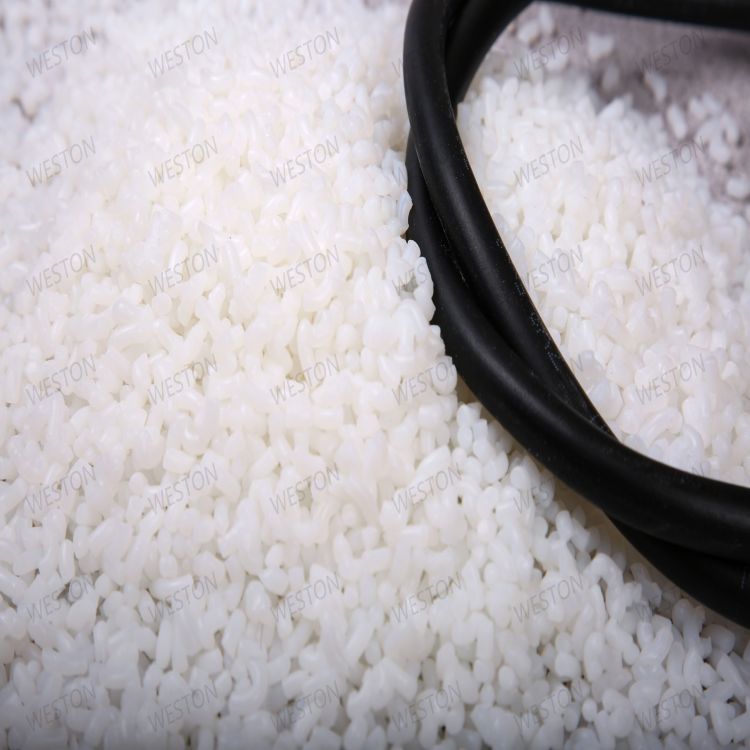-
Categories
-
Pharmaceutical Intermediates
-
Active Pharmaceutical Ingredients
-
Food Additives
- Industrial Coatings
- Agrochemicals
- Dyes and Pigments
- Surfactant
- Flavors and Fragrances
- Chemical Reagents
- Catalyst and Auxiliary
- Natural Products
- Inorganic Chemistry
-
Organic Chemistry
-
Biochemical Engineering
- Analytical Chemistry
- Cosmetic Ingredient
-
Pharmaceutical Intermediates
Promotion
ECHEMI Mall
Wholesale
Weekly Price
Exhibition
News
-
Trade Service
aniline
[Structural formula]
[Physical and chemical properties] This product is a colorless oily liquid with a strong odor and is poisonous.
It is also known as Anilin oil
.
The relative density is 1.
[Preparation method] There are 4 methods for the preparation of aniline: nitrobenzene iron powder reduction method, nitrobenzene hydrogen reduction method, phenol ammonolysis method and benzene direct amination method
.
(1) Nitrobenzene reduction method
Method 1: Add nitrobenzene , ferrous chloride solution (or ammonium chloride solution) and ground iron powder into the reactor, stir continuously, and carry out the reduction reaction at 100℃; then, use lime intermittently And separate, separate into water phase and iron oxide slurry
.
Method 2: Place 0.
400g of reduced iron powder, 0.
400mL of water, and 1 to 2 drops of acetic acid in a ground conical flask , shake to mix, and boil for 1 min on low heat
.
Weigh 0.
Nitrobenzene reduction method is the oldest method to produce aniline.
The process is backward, the yield of aniline is low, and the pollution is serious
.
(2) Fluidized bed gas phase catalytic hydrogenation method
After the nitrobenzene is heated, it enters the nitrobenzene vaporizer, where it is mixed with the preheated hydrogen and gasified
.
The mixed gas enters the bottom of the fluidized bed reactor after being heated, and is evenly distributed into the catalyst layer, reacts at 240-370°C to form aniline, and condenses and separates crude aniline
The process flow is that after the fluidized bed reactor is filled with catalyst, hydrogen is introduced and the circulating compressor is started, and the medium-pressure steam is used to preheat the temperature to increase the temperature of the catalyst bed to 150-180°C, and then start the nitrobenzene feeding pump to slow down Slowly increase the material volume, mix with hydrogen, preheat the mixture of nitrobenzene and hydrogen with 2.
45MPa steam, and feed it from the bottom of the fluidized bed to control the system pressure to 0.
3MPa.
When the temperature of the lower part of the fluidized bed approaches 250℃, start the fluidized bed The tube water pump and the fluidized bed jacketed soft water pump control the reaction temperature of each section of the fluidized bed
.
The gas phase reactant containing aniline steam and excess hydrogen precipitates from the top of the fluidized bed, and enters the cooler after heat exchange with fresh hydrogen, and separates the non-condensable gas of aniline.
(3) Phenol ammonolysis
The phenol is gasified, and then an excess of ammonia gas is added to mix and gasify, and enter the fixed-bed tubular reactor equipped with SiO 2 -Al 2 O 3 catalyst.
The molar ratio of phenol to ammonia is 1:20.
It reacts to produce aniline and water at 480℃ and 0.
98~2.
94MPa pressure
.
The gas from the reactor enters the distillation tower through the condenser to recover ammonia.
(4) Direct amination of benzene
Using V 2 O 5 as a catalyst, benzene can be directly aminated to synthesize aniline at 150-500°C and 1.
013-101.
3 MPa.
The atomic utilization rate of the reaction is as high as 98%, and the only by-product is hydrogen
.
(5) Introduction of new technology
The aniline preparation process adopted in China consists of three major processes: nitration of benzene, gas-phase hydrogenation of nitrobenzene, and refining of aniline
.
The gas phase hydrogenation of nitrobenzene is the core of the process.
Qianwei Zhongzhong adopts a new two-stage fluidized bed technology to prepare high-purity aniline.
The new fluidized bed has a diameter of 4.
5m, a height of 30m, and a production capacity of 70,000 tons per year
.
The main technology is the use of high pressure drop variable mass flow loop gas distributor (resistance drop is about 15kPa), the 8, 9, and 10 layers are equipped with ridge members with an opening rate of 50%, and the heat exchange area is 500-700m 2 The heat exchanger, cyclone separator and two-stage fluidized bed structure
The height of the dense phase zone of the catalyst at the bottom of the reactor is controlled to be 6-7m, and the average temperature is 250-290℃; the height of the dense phase zone of the catalyst at the upper part of the reactor is controlled to be 1m, and the temperature is 210-220℃
.
The fresh hydrogen used in the test was obtained from the process of methane steam conversion and water gas shift.
After passing through the pressure swing adsorption device, the purity reached 98% or more
The characteristics of this technology are: ①Using a high-pressure drop gas distributor and higher operating gas speed to ensure that the catalyst is in a good fluidization state; ②Using ridge-shaped members, which can effectively break the bubbles without hindering the violent movement of the catalyst ③The new two-stage fluidized bed technology is adopted, which can effectively inhibit the gas backmixing in the fluidized bed, increase the driving force of the conversion of nitrobenzene, and promote the deep conversion of nitrobenzene.
The purpose of high-efficiency conversion of nitrobenzene and preparation of high-purity aniline is achieved in the reactor
.
[Technical Index] GB2961-2006







